Journal of Ergonomics
Open Access
ISSN: 2165-7556
+44 1300 500008
ISSN: 2165-7556
+44 1300 500008
Research Article - (2023)Volume 13, Issue 2
In India, Musculoskeletal Diseases (MSDs) are one of the most prevalent work related problems. Because the majority of the workers at an Indian saw mill is still performed task manually hence musculoskeletal disorders and injuries in various sections of the body are frequent. Lifting, carrying, pushing, and pulling are among the awkward manual handling tasks they frequently perform. These will be identified as musculoskeletal disorder risk factors. The study's goals are to find out the prevalence of musculoskeletal disorders and to assess the level of postural risk among resaw workers. In this study randomly 15 workers were selected for this study from 15 sawmills in Tamil Nadu and these workers were performing multiple task daily. For the last year, all sawmill workers experienced musculoskeletal disorders in at least one body part. The average Rapid Entire Body Assessment (REBA) score for the four primary actions (Pushing, Pulling, Moving, Lifting, and Carrying) was 10, indicating a high risk of MSD symptoms. The results also revealed that musculoskeletal discomfort was high among the sawmill workers who were doing the job for a longer period of time than those who are doing the same job. Based on these findings, it appears that repetitiveness in work, handling heavy load, sustained work task, and awkward posture might be the causative factors for the development of their discomfort feelings. Thus to ensure good health, safety and productivity of these workers, some ergonomic measures have to be taken as early as possible.
Musculoskeletal disorders; Repetitive work; Awkward posture; REBA
The sawmill industry is one of Tamilnadu oldest industries. It involves a large number of low wage workers. They work for long periods and are expected to carry a variety of loads while doing so. Carrying, pushing, pulling, cutting, molding, and smoothing timber for producing processed timber for use in various sectors such as furniture, building, and other industries are the key duties involved in the industry. Workers must frequently adopt awkward and prolonged static postures, lift or carry large weights, make repetitive wrist motions during machine operations and hammering, and do a variety of other hazardous tasks to carry out these tasks. All of these tasks may create pain or discomfort feelings in the sawmill workers' different body parts. One of the most common occupational health issues among manual sawmill workers is Musculoskeletal Disorders (MSDs). (Gosh) In Bangladesh, the majority of sawmill activities are conducted manually. Lifting, carrying, pulling, and pushing are examples of these activities. All of these activities placed sawmill workers at high risks for Musculoskeletal Disorders (MSDs) or injuries to various parts of the body [1].
Previous studies in sawmills revealed that this industry has a high level of manual handling dangers, with tasks involving moving heavy loads, awkward postures, and repeated movements, all of which are known risk factors for the development of musculoskeletal disorders. The wrist, elbow, and lower back have been identified to be the most affected body parts by MSD among sawmill workers. Dimensions of timbers, heavy weight of timbers, transfer lengths of loads of timbers, task frequency, and total task duration are the major job hazards in the sawmill industry.
Musculoskeletal Disorders (MSDs) are injuries and disorders that affect the movement or musculoskeletal system of the human body. Muscles, tendons, ligaments, nerves, discs, blood vessels, and other body parts are included. Work Related Musculoskeletal Disorders (WRMSDs), on the other hand, are caused by a continuous and long-term high repetitive task, sudden exposure to lifting or carrying heavy weights, excessive force, and working in an awkward body posture. Employers and employees are both affected by work related musculoskeletal disorders. It affects the employer's productivity by increasing absenteeism, staff turnover, recruitment and training costs, and so on. Work, economic, and family stresses all contribute to WRMSDs reducing workers' quality of life. It may also increase direct and indirect costs for workers, including such diagnosis and treatment.
The following are some of the studies that have been undertaken to better understand the prevalence of WRMSD among workers. A study of 110 male workers from a sawmill factory in Nimtala, Kolkata, India was conducted. Musculoskeletal discomfort was discovered to be a major issue among sawmill workers, with pain mostly affecting the lower back (%), neck (95.96 %), wrist (87.78 %), and shoulder (84.44 %) [2-5].
They also identify the factors that contribute to the reduction of such discomfort. To investigate the prevalence of musculoskeletal disorders, 116 pre-cast construction workers (male) in Sipitang, Sabah, Malaysia engaged in a structured discussion using a Modified-Standardized Nordic Questionnaire (MSDs). According to the findings, 80.17 % complained of aches, pains, or body discomfort during and after work. They also discovered a high prevalence of MSDs in the wrist (78.5%), shoulder (73.1%), and lower leg (71.0%) pain areas of the body.
REBA was utilized to assess the posture of sawmill workers in India's Karnataka state. REBA is a postural analysis technique used to determine the chance of developing work related musculoskeletal disorders. Wrists, forearms, elbows, shoulders, neck, trunk, back, legs, and knees have been employed in the REBA score assessment sheet to award a score. The data was then collected and scored for each area. Each score represents the degree of MSD risk. The average REBA score was 7.5, according to the researchers. This indicates that the workers were above their safe operating limits. They also discovered a variety of situations, including severe environments (cold temperatures, sloppy and uneven ground); and heavy works (manual handling of loads back flexed and twisted) Chainsaws, for example, are dangerous tools and machinery that put employees at risk of MSD. Musculoskeletal Disorders (MSD) are presently one of the most common causes of work related diseases in the workplace in both developed and developing countries. MSD is the most prevalent self-reported work related illness and the leading cause of disability among the people during working years (Figure 1).
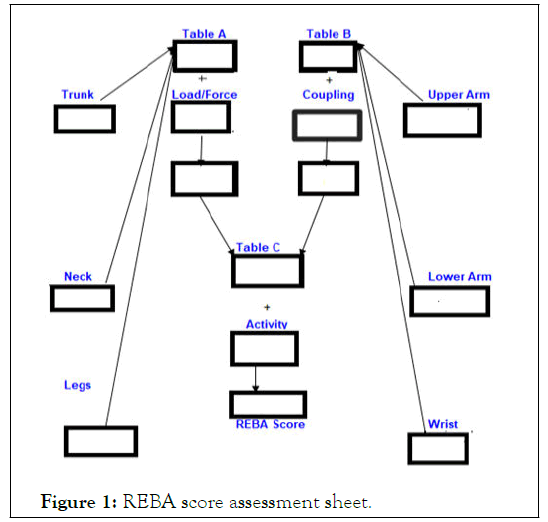
Figure 1: REBA score assessment sheet.
According to Levy and Wegman, occupationally caused or aggravated MSD is the health problem that affects people's quality of life the most. Over exertion, muscle tension, awkward or prolonged static posture, repetitive work, pushing, pulling, vibrations, and other variables are well-known factors for the development of Work Related Musculoskeletal Diseases (WMSD). A task with a high repetition of motions and awkward postures has also been proven to cause a significant amount of complaints (National Institute of Occupational Health and Safety, NIOSH, 1997). Musculoskeletal Diseases (MSDs), such as work related neck and upper limb disorders and work related back disorders, are well known for decreasing employee productivity and well-being [6-8].
Work Related Musculoskeletal Disorders affect a large number of sawmill workers (WRMSDs). They also spend a significant amount of money on medication. However, we are not aware of any research that has been conducted on work related musculoskeletal disorders among Tamil nadu sawmill workers. In the present investigation an attempt to determine the prevalence of musculoskeletal discomfort among sawmill workers in Tamil nadu, India. Determine the risk factors associated to musculoskeletal disorders symptoms among Tamil Nadu sawmill workers.
Sample collection
To conduct this cross-sectional study, 15 male sawmill workers were randomly selected from 15 sawmills in Tamil Nadu. Workers from the chosen respondent do a variety of tasks. Lifting, carrying, pulling, and pushing the timber are all included [9,10].
Study of work schedule: The sawmill workers worked ten hours a day, from 8 a.m. to 6 p.m., with a one hour break (1.30 p.m.-2.30 p.m.). Every week, they were given a day off. Saw blades and molding equipment were utilized by the workers.
Questionnaire method: For this study, the modified nordic questionnaire was used. A series of objective type questions with multiple choice responses makes up the questionnaire. Because the workers came from various of backgrounds and had varying levels of education, the face-to-face interview was considered to be more reliable in collecting correct information from workers. The questions were divided into primary categories, each of which dealt with:
• General information about the sawmill workers.
• Work organization and work behaviors.
• Detailed questions on work-related musculoskeletal pain or body part discomfort.
Assessment of discomfort feelings: In this part of the survey, participants were asked about any discomfort they were feeling in their body, such as in the hands, shoulders, lower back, and legs, among other locations. The Body Part Discomfort (BPD) scale was used to determine the severity of the pain or discomfort. As shown in Figure 2, each body part was rated on a scale of 1 to 10 to indicate the intensity of discomfort (Figure 2).

Figure 2: Body part discomfort scale.
Analysis of working posture: For postural study of work related musculoskeletal risk factors, the Rapid Entire Body Assessment (REBA) approach was used. REBA (Rapid Entire Body Assessment) was created by Hi-gnett S, and McAtamney, to provide a quick and easy observational postural analysis tool for entire body activities (static and dynamic), resulting in musculoskeletal risk action levels. The goal of REBA's development is to divide the body into segments that can be coded individually using movement planes. It calculates the amount of muscle activation generated by static, dynamic, rapidly changing, or unstable postures. It shows that coupling is important in load handling, but it's not necessarily done with the hands. It also includes an activity level as well as an indicator of urgency. This method was created specifically for assessing MSD risks/ working postures in the healthcare and other service industries. It can, however, be used to assess a variety of tasks in any setting where the whole body is engaged, the posture is static, dynamic, rapidly changing, or unstable, and animate or inanimate loads are handled frequently or infrequently (Table 1) [11-13].
| REBA score | Risk level | Action |
|---|---|---|
| 1 | Negligible | None necessary |
| 2-3 | Low | May be necessary |
| 4-7 | Medium | Necessary |
| 8-10 | High | Necessary soon |
| 11-15 | Very high | Necessary now |
Table 1: REBA score and associated risk level.
As shown in Table 2, the average age of the sawmill workers was 39.6 years (SD, 10.6). The BMI values were found to be 24.6 (SD, 1.29) suggesting that the sawmill workers had a normal range of BMI. A BMI of 18.5-24.9 indicates a healthy weight with respect to height. The healthy weight aids to lessen the risk of serious health related problems and it pointers the persons close to his fitness goals. From these aspects, we found that maximum workers in this study are close to the fitness goal (Table 2).
| Variables | Mean | ± SD |
|---|---|---|
| Age (years) | 39.6 | 10.6 |
| Height (cm) | 167.8 | 6.2 |
| Weight (kg) | 75.4 | 7.3 |
| BMI (Kg/m2) | 24.6 | 1.29 |
| Working experience (years) | 9.8 | 6.3 |
Table 2: General information of saw mill workers.
The analysis of questionnaire presented in Table 3 showed that most of the sawmill workers (90 among 110) reported discomfort feelings at their different body parts. Most workers felt discomfort mainly at the lower back (100%), neck (93.33%), wrist (80.00%), and shoulder (84.44%) region, respectively. However, the majority of those with discomfort were still able to continue with their work. Among of all body parts shoulder pain was attain 70.1%.
Figure 2 shows the result of respondents' musculoskeletal symptoms. Table 3 shows that over the past 12 months, 100 percent of sawmill workers experienced musculoskeletal disorders in at least one body part. Several investigations have come up with similar findings. Shoulder pain affected 84.44 percent of people across the board. According to a study 28.3 % of construction workers in Malaysia suffer from shoulder pain.
According to the findings, 100% of sawmill workers in Tamil Nadu suffer from back pain. In Bangladesh, % of automobile workers suffer from upper back pain, according to researchers [14-18]. The feet were found to be the least common musculoskeletal problem among sawmill workers in Bangladesh in this study. Wrist discomfort affects 80 percent of sawmill workers in Tamil Nadu, whereas lower arm pain affects 66.66 %. According to this study, 77 % sawmill workers suffer from wrist pain. As a result, 62.92 % of sawmill employees in Tamil Nadu had musculoskeletal discomfort, which is very high. As a result, we need take the required actions to resolve these issues (Table 3).
| Body parts | Number (%) |
|---|---|
| Neck | 14 (93.33) |
| Shoulder | 08 (84.44) |
| Upper arm | 09 (60.00) |
| Lower arm | 10 (66.66) |
| Wrist | 12 (80.00) |
| Lower back | 15 (100.0) |
| Knee | 05 (33.33) |
| Leg | 07 (46.66) |
| Feet | 03 (20.00) |
Table 3: Analysis of musculoskeletal discomfort at different body parts (n=15).
The most of the sawmill workers experienced moderate pain in various body parts (e.g., neck, shoulder, arm, lower back, etc.) according to the results of the body part discomfort scale. Mild pain was also reported by a large percentage of sawmill workers. As per the result of discomfort feelings of the saw mill workers was 80% moderate pain in lower arm, 73.33% of moderate pain in wrist, 73.33 % of severe pain in lower back and lowest pain in feet (Figure 3).
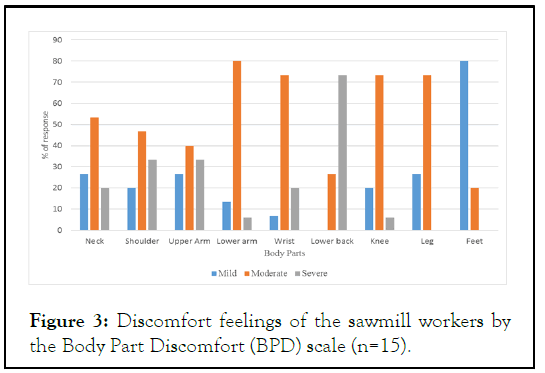
Figure 3: Discomfort feelings of the sawmill workers by the Body Part Discomfort (BPD) scale (n=15).
Researchers concluded that the workers also provided feedback on task factors that induce musculoskeletal disorders. Lifting timber (62.2%), carrying timber (49.2%), pulling timber (52%), and pushing timber (52%) are all examples (55.9%). Researchers conducted a study among Iran casting workshop workers and identified similar results. They concluded that workers had a high risk of work related musculoskeletal disorders when handling material in lifting (86%), carrying (66%), pulling (48%), and pushing (43%). They came to the conclusion that ergonomic improvements and reconsidering manual material handling tasks might help to reduce work related musculoskeletal disorders.
In this study 15 workers were performing multiple task in last 12 months repetitively. The Rapid Entire Body Assessment (REBA) score, risk level and relative action for four tasks such as pushing, pulling, lifting and carrying have shown in Table 4.
All transportation of logs from the unloading area to the carriage, and from the carriage to the delivery site, is done manually in approximately 15 sawmills in this region, and many of these manual tasks were observed for 2 hours at a stretch for standing position of the workers. The work required a lot of effort from the trunk and arms. Work in a conventional saw mill begins with the unloading of raw timber logs into the mill's unloading area. The logs were then transferred to a horizontal band saw using levers, and the wooden log parts were fixed in the band saw carriage. Figure 4 shows the operator pulling the band saw carriage with the help of a robe or belt. This posture was back bent, backward and twisted, both arms below the shoulder level, standing with one bent knee, a weight or force needed to be over 20 kg. Applying REBA on Figure 4, it gave the score ‘9’ suggesting high risk and immediate need of change, although full weight of the carriage was act on the lower back (Figures 4 and 5).
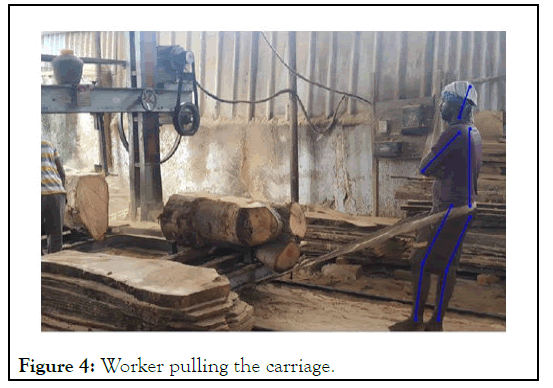
Figure 4: Worker pulling the carriage.
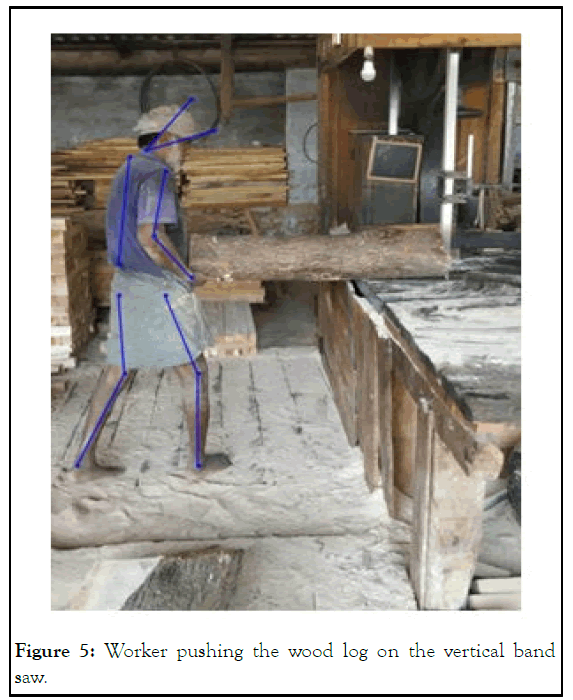
Figure 5: Worker pushing the wood log on the vertical band saw.
In case of small wooden logs vertical band saw machine or resaw machine is used instead of horizontal band saw as shown in Figure 5. Posture was back bent forward, both arms below the shoulder level, standing with one bent knee, a weight or force needed to be over 10 kg and the posture giving the REBA score 8.
Figure 6 shows the worker carrying the wood log or timber on shoulder from unloading area to near band saw machine, 8 m distance worker carrying the wood log for several times. Posture was back bent forward/backward, both arms above the shoulder level, walking or moving, a weight or force needed to be over 20 kg.
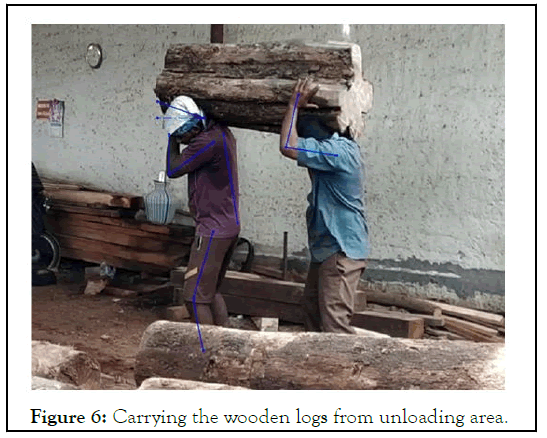
Figure 6: Carrying the wooden logs from unloading area.
Figure 7 shows the worker lifting the timbers lifting the wood from the ground to the band saw carriage. In this task back bent forward and twisted, both arms below the shoulder level, both knees bent, a weight of 10 kg or less. Applying REBA on, it gives score ‘10’, so action need to take soon.
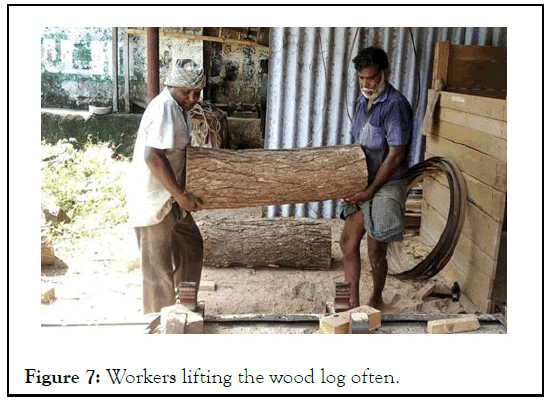
Figure 7: Workers lifting the wood log often.
The average REBA score is 10, as shown in Table 4. This is a high risk problem, and we must act immediately to resolve it. The lifting task gets the highest REBA score out of the four. The risk level is very high, and immediate action is required. For the pulling task, the score is 9. Others are in the high risk zone, pushing (8) and carrying (11) each other (Figure 8).
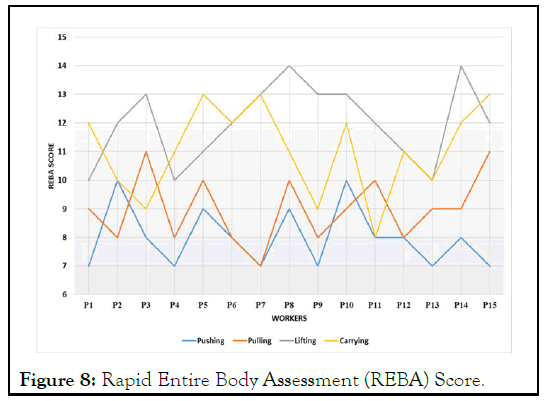
Figure 8: Rapid Entire Body Assessment (REBA) Score.
Figure 7 shows the rapid entire assessment scores for the 15 subjects and for the four tasks. The average REBA score for lifting, carrying, pulling, and pushing was 12, 11, 9, 8 respectively. The overall average score observed was 10, it indicates that posture score the most workers were well above the safe scores hence immediate change or ergonomic intervention is required in the work station. The results of the study showed that saw mill workers perform hard manual work, leading to a variety of MSDs mainly affects the upper extremity of the body. Work related incidents affect different body parts of workers and also resulted in a high rate of productivity loss. Unskilled workers have also been observed to fail to maintain their commitments due to absenteeism. Researchers also discovered that India has a high risk level among small scale sawmill workers (Tables 4 and 5).
| Task | REBA score | Risk level | Action |
|---|---|---|---|
| Pushing | 8 | High | Necessary soon |
| Pulling | 9 | Medium | Necessary soon |
| Lifting | 12 | Very high | Necessary now |
| Carrying | 11 | High | Necessary soon |
| Average | 10 | High | Necessary soon |
Table 4: Rapid Entire Body Assessment (REBA) score.
According to Table 5, sawmill activities mainly consist of lifting, carrying, pulling, and pushing timber to obtain raw wood for furniture. Each action or task of the Sawmill can indicate ergonomics risk factors that are primarily associated to musculoskeletal disorders. To the sawmill workers, these jobs include a rigid posture, considerable force, and repetitive work. The muscular systems of the body are damaged if these actions are performed for a longer length of time. The neck, shoulders, upper back, lower back, elbow, wrist, knee, and other systems are all involved in these systems. Scientists determined the incorrect working posture, which is linked to the development of musculoskeletal discomfort.
| Task | Stick diagram | Problematic work-related activities | Risk factor | MSDs for body regions |
|---|---|---|---|---|
| Pushing the timber into saw table | 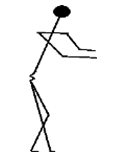 |
Bending of the body and trending the body parts | Awkward posture, repetition and force | Lower back, elbow and wrist disorders |
| Pulling the timber from saw table | 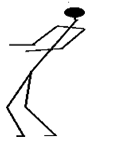 |
Bending of the body, hand and legs | Force, awkward posture and disorders repetition | Lower back, upper back, elbow and wrist |
| Carry out the timber to saw table | 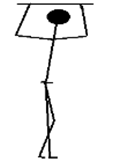 |
Bending the hand, legs and twisting the body | Awkward posture | Upper back, shoulder and leg region disorders |
| Lifting the timber from ground | 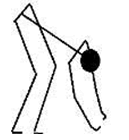 |
Back bending and twisting the body | Awkward posture, Force | Upper back, lower, arm, wrist and leg region disorders |
Table 5: Work related musculoskeletal disorders by tasks.
As a result, workers that works in an uncomfortable posture for a prolonged period of time experience musculoskeletal discomfort. Uncompromising working posture, according to researchers, can induce strains in workers' low backs and have a severe impact on their health. They work according to employment requirements and work more hours in order to earn more money. This was recommended because of their extended working hours and the consistency of their work.
The majority of sawmill workers in Tamil nadu are affected by musculoskeletal disorders, according to this study. It revealed that the major cause of these MSDs is a lack of ergonomics awareness. Another factor is that people are working in the awkward positions. The average REBA is a 10, indicating that the tasks are high risk. As a result, it is essential to redesign the workstation as soon as possible. We also identified certain risk factors for musculoskeletal problems in this investigation. As a result, for the ergonomic risk assessment of stress produced by working, both management and workers should work to eliminate or reduce these problems. Workers must get technical training in the areas of ergonomic safety, risk factors, and working positions. As far as possible, mechanical handling assists are required. Health check-up program must be initiated at regular interval and the work period should be modified to include frequent rest breaks, which could improve their efficiency.
[Crossref] [Google Scholar] [Pubmed]
[Crossref] [Google Scholar] [PubMed]
[Google Scholar] [PubMed]
[Crossref] [Google Scholar] [PubMed]
[Crossref] [Google Scholar] [PubMed]
[Crossref]
[Crossref] [Google Scholar] [Pubmed]
[Crossref] [Google Scholar]
Citation: Vadivel S, Subramaniyan C, Muthukumar K, Bharani T (2023) Ergonomic Risk Assessment of Saw Mill Operator. J Ergonomics. 13:328.
Received: 24-Nov-2022, Manuscript No. JER-23-20399; Editor assigned: 28-Nov-2022, Pre QC No. JER-23-20399 (PQ); Reviewed: 12-Dec-2022, QC No. JER-23-20399; Revised: 13-Feb-2023, Manuscript No. JER-23-20399 (R); Published: 20-Feb-2023 , DOI: 10.35248/2165-7556.23.13.328
Copyright: © 2023 Vadivel S, et al. This is an open-access article distributed under the terms of the Creative Commons Attribution License, which permits unrestricted use, distribution, and reproduction in any medium, provided the original author and source are credited.